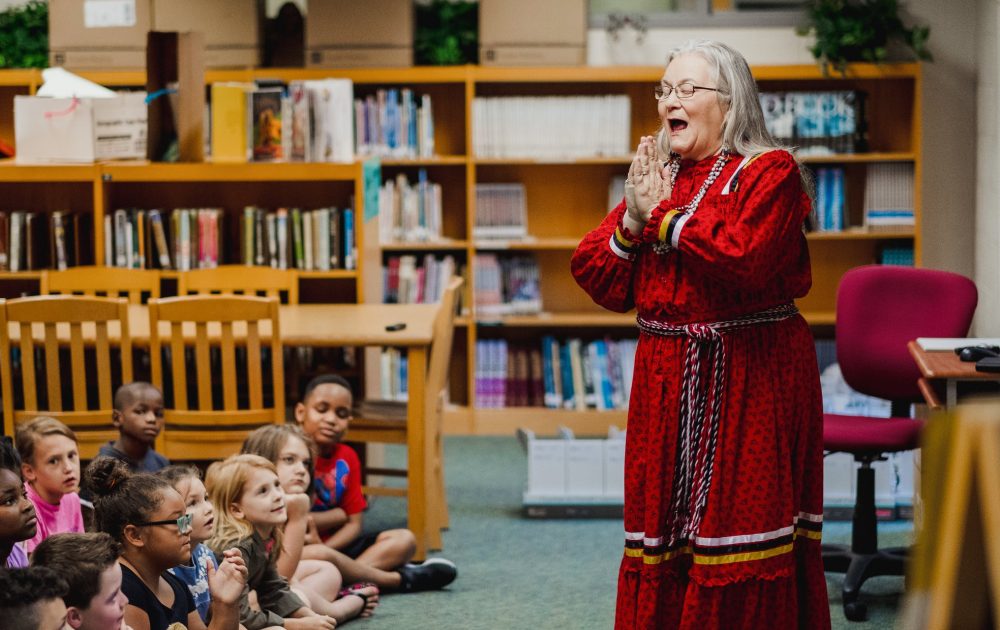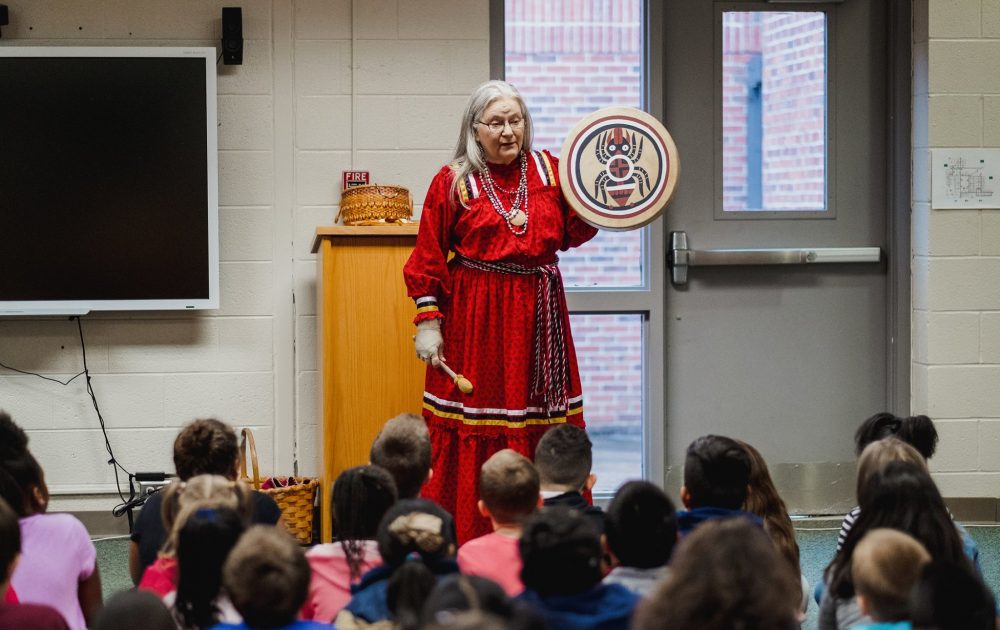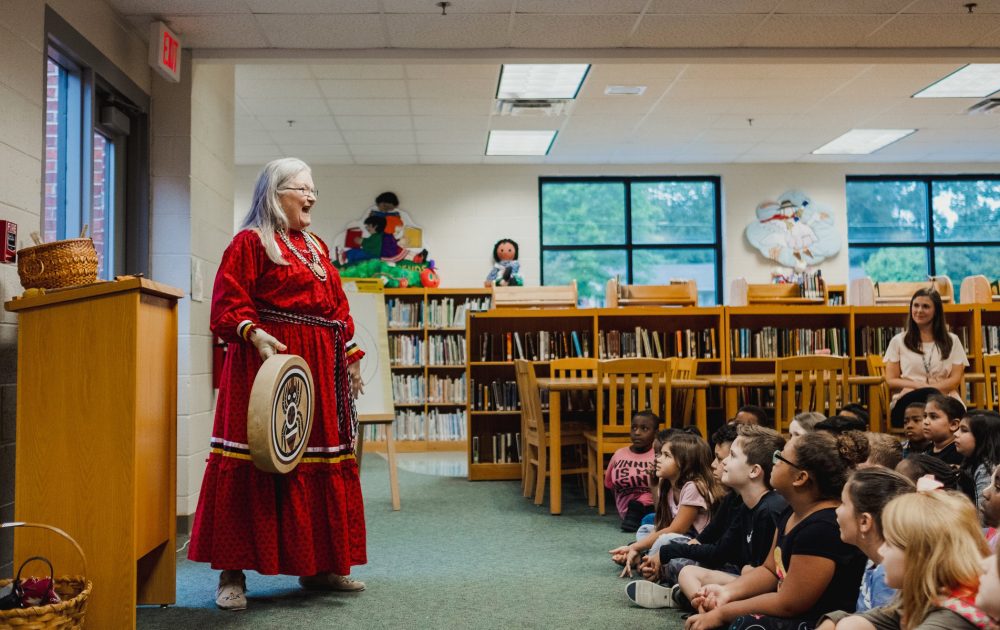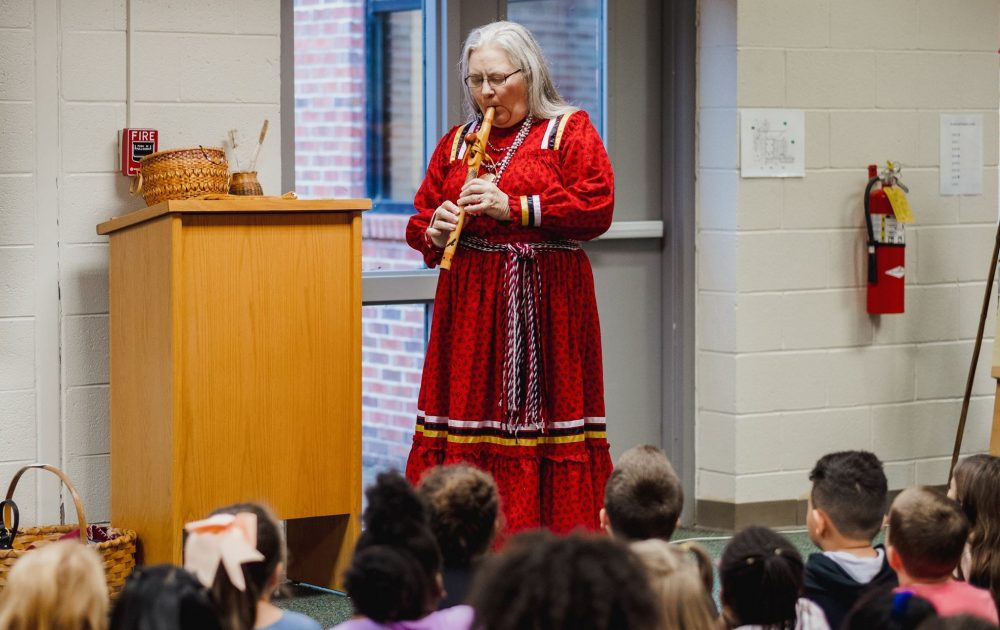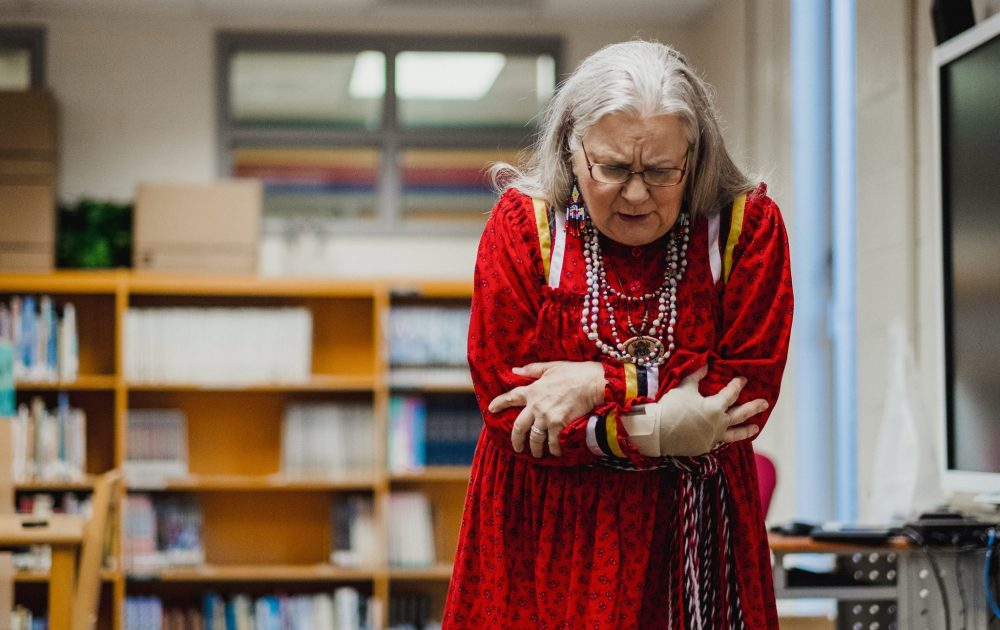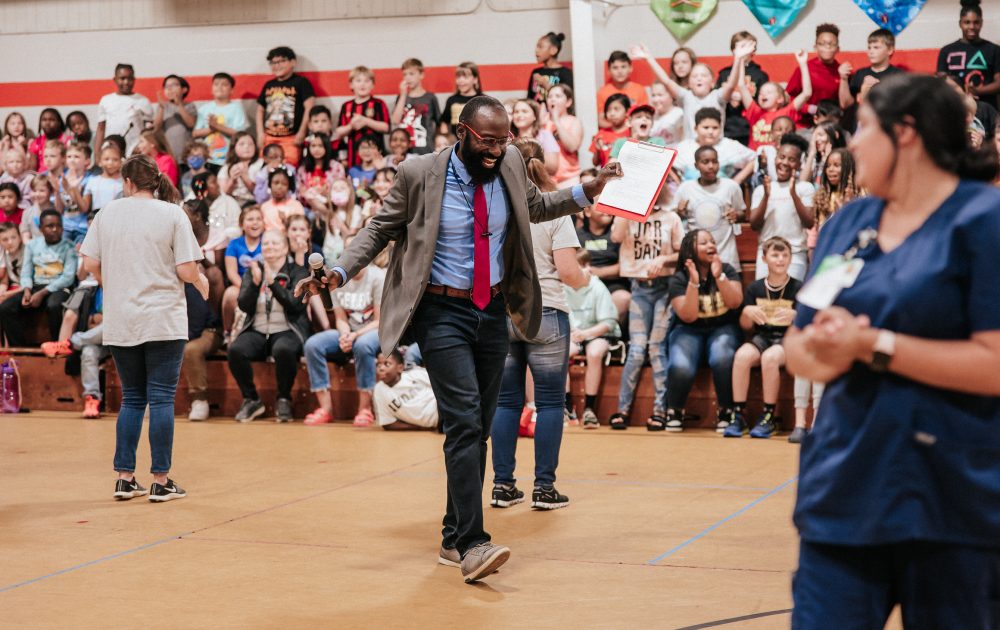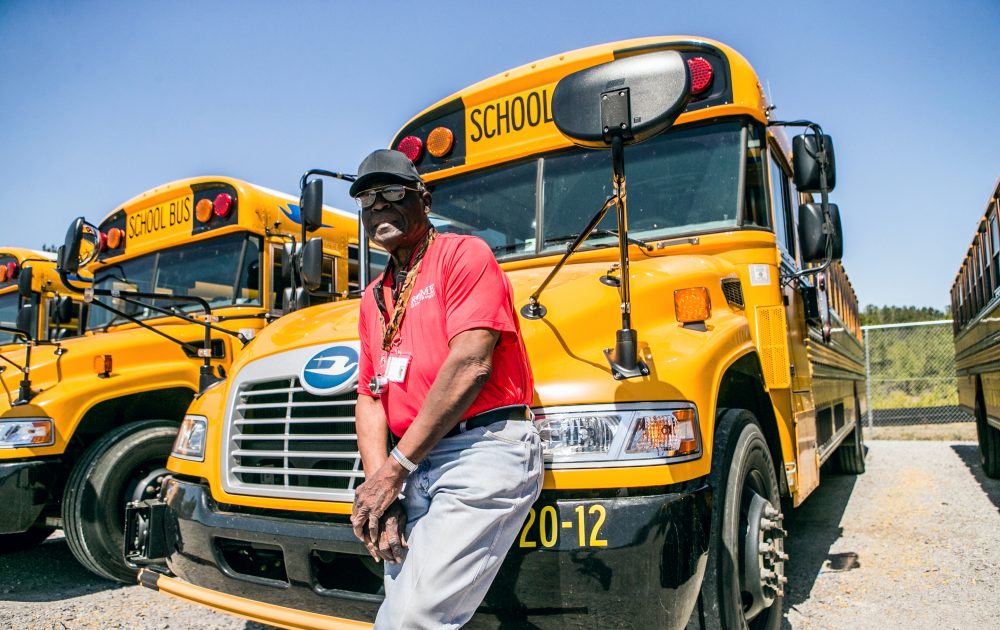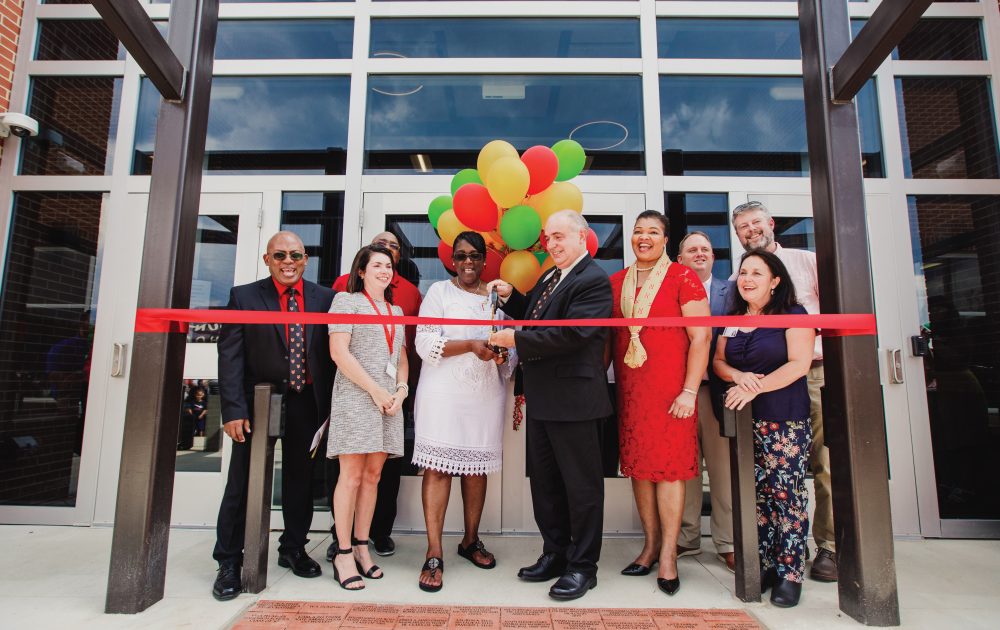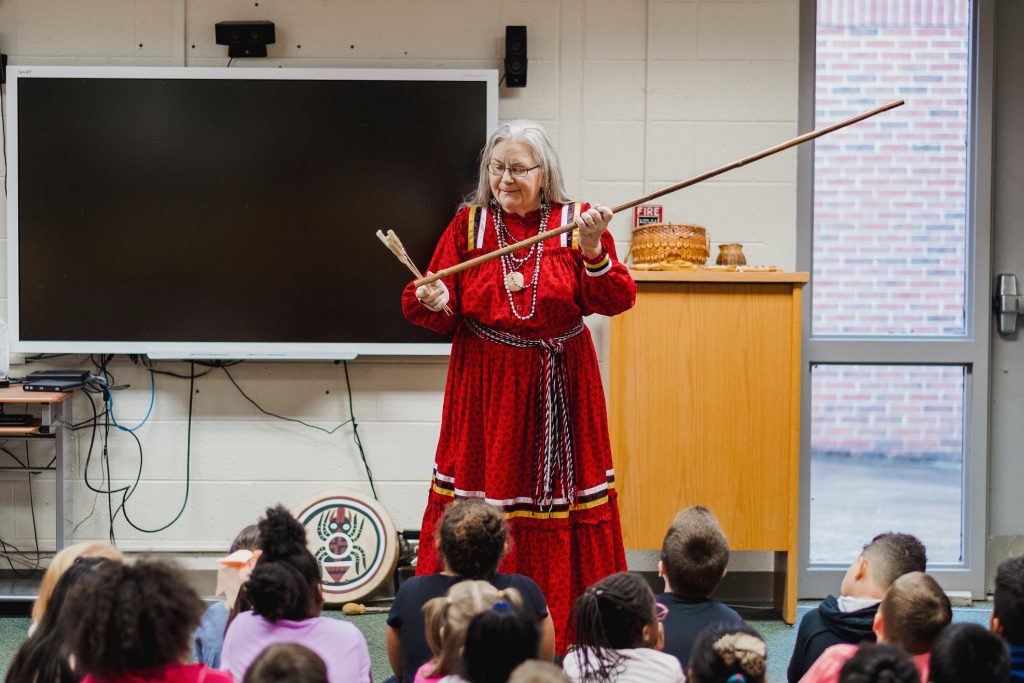
Photo by Rome City Schools
Students in Rome City Schools are learning about Native American culture and customs. Anyone within a stone’s throw of Northwest Georgia has almost certainly heard the stories about Major Ridge and the Chieftains Museum, climbed to the top of the Etowah Indian Mounds to admire the view, or walked in the footsteps Native Americans who marched out west on the Trial of Tears. Laced with a rich history and knotted together with lore and imagination are the stories handed down through generations of America’s original inhabitants.
One former teacher fell in love with the way Native Americans explained the world around them and made it her mission to pass these stories on.
Carol H. Brown, a retired educator from Rockdale County, taught eight-grade students for 34 years. With a strong focus on social studies and history, Brown developed a love for all-things-past. One storied group, however, would be the catalyst for her current role in schools who invite her to come out and speak to children of all ages.
“I really loved to teach Georgia Studies to my eight graders, and as sort of an offshoot to the lessons, I would provide Native American stories as enrichment for my students,” Brown explained. “But because I was a teacher in Georgia, more and more of my stories came from the Cherokee culture since many of the resources and the native people are still here today.”
Brown went on to explain that she is a member of the Daughters of the American Revolution, a group specifically tasked with educating children, preserving history, community service and honoring veterans. Part of her contribution to the group is hosting lectures about Native American culture. Since Native American history is one that is directly tied to Georgia, Brown chose to examine these stories more closely and pass them on through storytelling.
“I do try to concentrate on the Cherokee tribe, but I also try to tie tribal cultures around the world to each other and explore their commonalities,” said Brown. “Studying history is essential. I think young people today can benefit by having a good sense of what came before. So much of what we hear is all about now and I love the thought of connecting young people with what came before them.”
Using a spider to explain how the Cherokee people got fire across the water and a 10-foot hare to explain how the tribe related to the animals they used for food and clothing, Brown told animated tales she had learned directly from the Cherokee Nation.
She also gave a stirring demonstration of the sound of a Cherokee flute, beautifully crafted from white and red cedar wood. Perhaps what was most exciting for the group of second grade students was Brown’s blow-gun demonstration. Using a river cane that had been hollowed out, the Cherokee storyteller hit a target with darts made from willow twigs and thistle downs. All of her relics, including a drum made from animal skin, were constructed using materials and methods true to the Cherokee.
“We were able to experience Mrs. Brown’s storytelling because I teach her grandson, T.J. Brown,” said Courtney Cescutti who serves as a second grade teacher at West End. “His mother, Allison Brown, is also a third grade teacher here, so she was able to put us all in touch. We are comparing our present culture to the American Indian’s past, so this was really great for enforcing what we are learning in class.”
From food and tools, to clothes and cultures, Cescutti said that the students have enjoyed finding themselves in the identity of a group they are unfamiliar with.
“Mrs. Brown has given our students a picture to pair with everything we’ve studied which will help them to understand the American Indian culture even more. We are actually planning a trip to New Echota, where we will get to go and see the Cherokee Indian Nation’s capital on October 19. We are going to also start studying Sequoia and his contributions to the Cherokee alphabet. So, these stories they were told today will really help them makes these important connections to America’s past.

